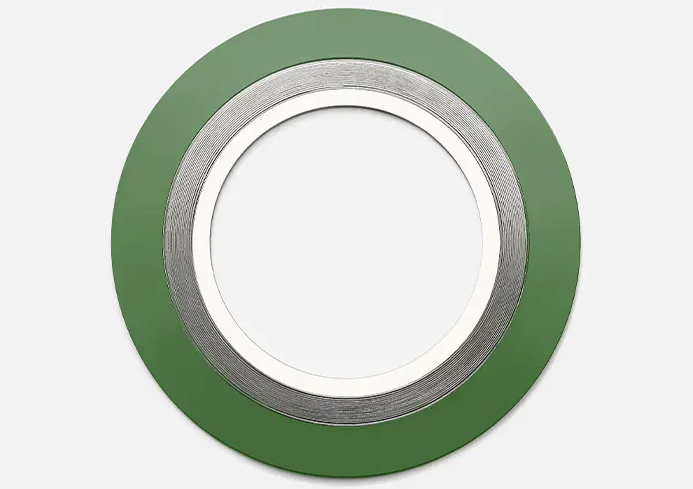RILSON GASKET
Ningbo Rilson Sealing Material Co., Ltd is dedicated to ensuring the secure and dependable operation of fluid sealing systems, offering clients the appropriate sealing technology solutions.
Spiral wound gaskets are a metal-nonmetal composite gasket widely used for sealing pipes, valves, and pressure vessels. Their unique structure combines the strength of metal with the flexibility of nonmetal, making them suitable for use in high-temperature, high-pressure, and corrosive media applications. Comprised of alternating formed metal wires and soft filler material, spiral wound gaskets form a highly effective seal when compressed between two flanges. The V-shaped crown at the center of the metal strip acts as a spring, giving the gasket increased elasticity under varying conditions. Filler and wire materials can be adjusted to meet varying chemical compatibility requirements.
1. Structure and Composition of Spiral Wound Gaskets
Metal Strips: Typically made of corrosion-resistant alloys such as stainless steel (such as 304 and 316), titanium, and monel, the metal strips are pressed into a V- or W-shaped cross-section to provide elastic support.
Non-Metallic Filler Layers: Commonly made of materials such as graphite, polytetrafluoroethylene (PTFE), and mica, these filler layers are embedded between the metal strips to provide a seal and compensate for surface irregularities. Inner and Outer Rings (Optional):
Inner Ring: Prevents media from eroding the gasket internally, reducing the risk of the metal strip loosening.
Outer Ring (Carbon Steel or Stainless Steel): Positions the gasket, prevents over-compression, and improves pressure resistance.
2. Features and Advantages
Resistant to Extreme Conditions: Withstands high temperatures (up to 1000°C or higher, depending on the material) and high pressures (such as Class 900 flanges and above).
Excellent Sealing: The combination of metal and non-metallic materials adapts to even minor flange surface irregularities.
Chemical Resistance: Compatible with media such as acids, alkalis, oil, and gas by selecting different metals and filler materials.
Elastic Resilience: The spiral structure of the metal strip maintains a seal even after pressure changes.
3. Common Types of Spiral Wound Gaskets
Basic Type (No Ring): Contains only the metal and non-metallic spiral wound layers, suitable for standard flanges.
Type with Inner Ring: Enhances internal pressure resistance, suitable for high-pressure or easily erosive media.
Type with Outer Ring: Easily installs and positions, preventing gasket collapse. Spiral Wound Gaskets: Combine the advantages of both types and are suitable for demanding applications (such as API 6A).

4. Applications of Spiral Wound Gaskets
Petrochemical: Pipe flanges, reactors, and heat exchangers.
Power Industry: Steam turbines and high-temperature boiler systems.
Pharmaceutical/Food: Applications requiring sanitary PTFE filling.
Aerospace: Fuel system seals.
5. Selection Considerations
Material Matching: Select the metal strip and filler layer based on the corrosiveness and temperature of the media.
Flange Standard: Confirm the flange rating (such as ANSI, DIN, and JIS) and dimensions.
Pressure Rating: Different winding densities affect pressure-bearing capacity.
Installation Requirements: Bolts must be tightened evenly to avoid localized overpressure that can lead to failure.
6. Comparison with Other Gaskets
Metal Flat Gaskets: High hardness but poor compensation, requiring extremely high bolt loads.
Rubber Gaskets: Suitable only for low temperatures and pressures and prone to aging.
Graphite Composite Gaskets: No metal support and prone to brittleness at high temperatures.